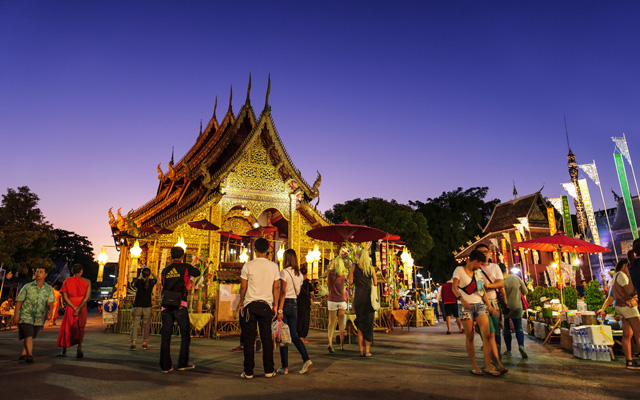With the rise of LCCs and millennial preferences, passenger volume into Chiang Mai grew 13 per cent to hit 4.6 million arrivals in 2016, trailing only Phuket among Thailand’s provincial airports last year, according to C9 Hotelworks’ Chiang Mai Hotel Market 2017 report.
Commented Bill Barnett, managing director of C9: “Thailand’s legacy Chiang Mai tourism market has undergone a millennial transformation that is now tapping into a new base of travellers seeking authentic Thai experiences.”

Of total arrivals, 77 per cent entered the destination on domestic routes and 79 per cent were from Chiang Mai’s top five overseas source markets – China, Malaysia, South Korea, Hong Kong and the US.
Between Greater China and Chiang Mai, 5,346 direct flights were routed. Top feeder cities from the region include Hong Kong, Shanghai, Chongqing and Chengdu.
The report further revealed that in the past 10 years, 62 per cent of passenger arrivals were on LCCs.
In that period, total arrivals shot up threefold with 2013 being the turning point, fuelled by the success of the Chinese film Lost in Thailand. In that year, Greater China posted a dramatic growth of 235 per cent.
Noting the “explosive impact of cinematic wanderlust on tourism”, Barnett said: “Be it Eat Pray Love or Notting Hill, the impact on film in destination marketing is remarkable. While Thailand’s travel market outside of Bangkok had shifted to the beach in the early millennium, a rising tide of Asian travellers and westerners who increasingly want to get into the culture club instead of the surf and turf are changing the markets.”
Meanwhile in the hotel sector, C9 reported a downscaling of room inventory per hotel, reflecting a trend towards boutique hotels and hostels.
Currently, Chiang Mai has a total of 33,593 keys in 831 registered and unregistered tourist accommodation establishments. An additional 524 keys are expected to come on stream by 2019, with the majority of pipeline properties concentrated in the Old City catchment area.
“As Thailand’s government has pivoted its tourism ambition from quantity to quality, Chiang Mai has fitted nicely into the equation with a range of impressive new boutique hotels, a rampant art scene and budding culinary offerings. The shift is resonating with Thai and foreign travellers alike,” said Barnett.




















